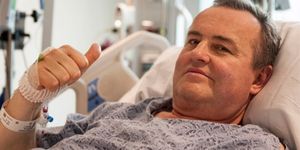Sleep is one of the critical needs of the human body. It has been studied extensively in the laboratory, and the reliance of the body on circadian rhythms, encoded by sunlight exposure, is well established. Society has moved well beyond the ‘borders’ of night and day established by sunlight, however. Whether it’s using lamps to stay up studying for an exam, a direct modulation of the light cycle we rely on, or disrupting the sleep cycle through non-circadian routes, such as by using an alarm to get up early, there are lots of external pressures on this cycle. Understanding the ways in which these factors control our sleep cycles is of critical importance to human health.
Questionnaires have been helpful, but a precise characterization of the impact societal pressures have on sleep remains out of reach. Smartphones have enabled researchers to change all of that. In 2014, a research group at the University of Michigan created and released an app they called ENTRAIN. The app received details about the usual sleep times, the home time zone, and the typical lighting experienced by the user. Users were able to transmit their data to the servers of the researchers, who then got a wealth of information and published about it in
Science Advances.
The differences between the sleep schedules of different nations were interesting. The Dutch apparently sleep an average of eight hours, 12 minutes, while in Singapore or Japan they get an average of seven hours and 24 minutes. Those in the UK and France get about 8 hours. The US was near the average at just under eight hours. They found that there is a correlation between bedtime and length of sleep. The later a country goes to bed, the less sleep they get.
Daniel Forger, of the Department of Mathematics at University of Michigan and one of the authors of the study, commented to the BBC, "Society is pushing us to stay up late, our clocks are trying to get us up earlier and in the middle the amount of sleep is being sacrificed; that's what we think is going on in global sleep crisis.” He continued, "If you look at countries that are really getting less sleep then I'd spend less time worrying about alarm clocks and more about what people are doing at night - are they having big dinners at 22:00 or expected to go back to the office?"
There were some other notable findings reported. Women in the study got about 30 minutes more in bed per night than men did, particularly between the ages of 30 and 60. While there was a wide range of sleep and wake-up times found in young people, "that really narrows in old age," said Forger.
It was also reported that those who spent the most time in natural sunlight also tended to go to bed earlier. Working overnight shifts has been linked to a host of serious health problems, and getting to the cause of that is very important for public health.
Importantly, the researchers have demonstrated that using an app for reliable data collection is possible, which could have broad, positive implications for public health research.
Sources:
Science Advances,
BBC
_a4f3a125ea35d6eea8edf010643e6a95.jpg)









